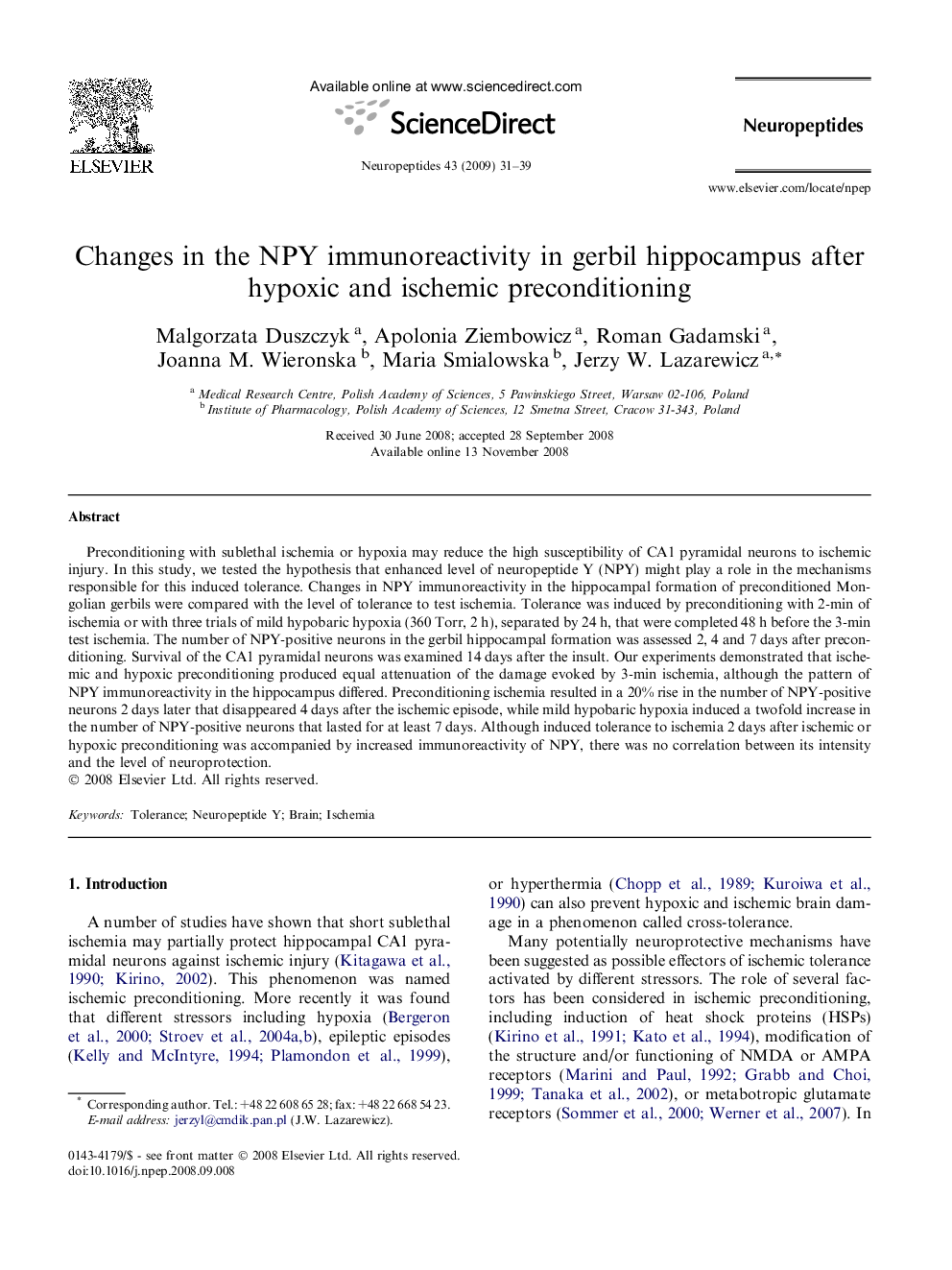| Article ID | Journal | Published Year | Pages | File Type |
|---|---|---|---|---|
| 2808594 | Neuropeptides | 2009 | 9 Pages |
Preconditioning with sublethal ischemia or hypoxia may reduce the high susceptibility of CA1 pyramidal neurons to ischemic injury. In this study, we tested the hypothesis that enhanced level of neuropeptide Y (NPY) might play a role in the mechanisms responsible for this induced tolerance. Changes in NPY immunoreactivity in the hippocampal formation of preconditioned Mongolian gerbils were compared with the level of tolerance to test ischemia. Tolerance was induced by preconditioning with 2-min of ischemia or with three trials of mild hypobaric hypoxia (360 Torr, 2 h), separated by 24 h, that were completed 48 h before the 3-min test ischemia. The number of NPY-positive neurons in the gerbil hippocampal formation was assessed 2, 4 and 7 days after preconditioning. Survival of the CA1 pyramidal neurons was examined 14 days after the insult. Our experiments demonstrated that ischemic and hypoxic preconditioning produced equal attenuation of the damage evoked by 3-min ischemia, although the pattern of NPY immunoreactivity in the hippocampus differed. Preconditioning ischemia resulted in a 20% rise in the number of NPY-positive neurons 2 days later that disappeared 4 days after the ischemic episode, while mild hypobaric hypoxia induced a twofold increase in the number of NPY-positive neurons that lasted for at least 7 days. Although induced tolerance to ischemia 2 days after ischemic or hypoxic preconditioning was accompanied by increased immunoreactivity of NPY, there was no correlation between its intensity and the level of neuroprotection.
